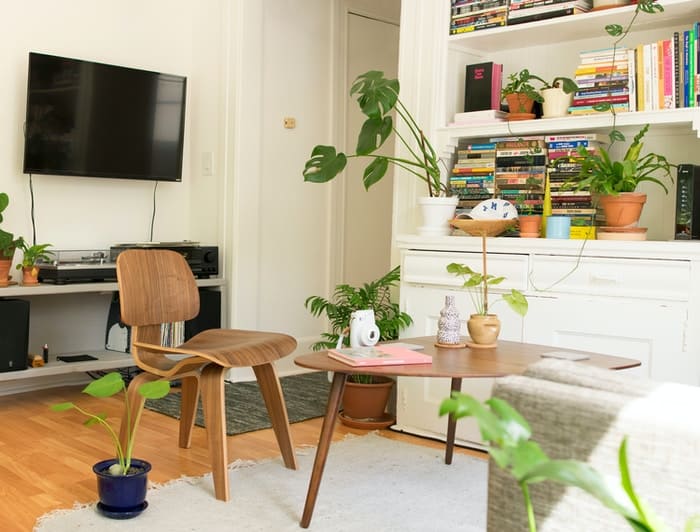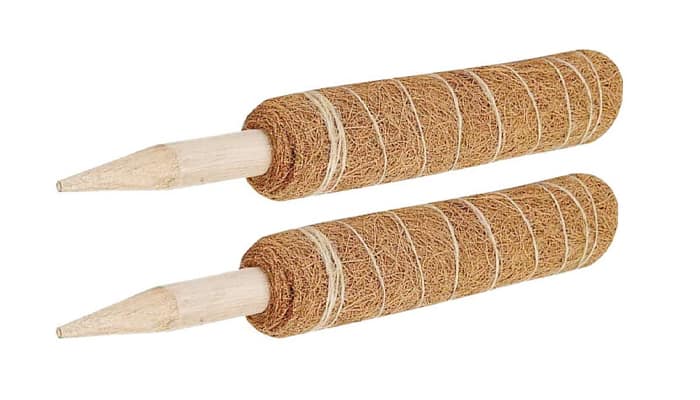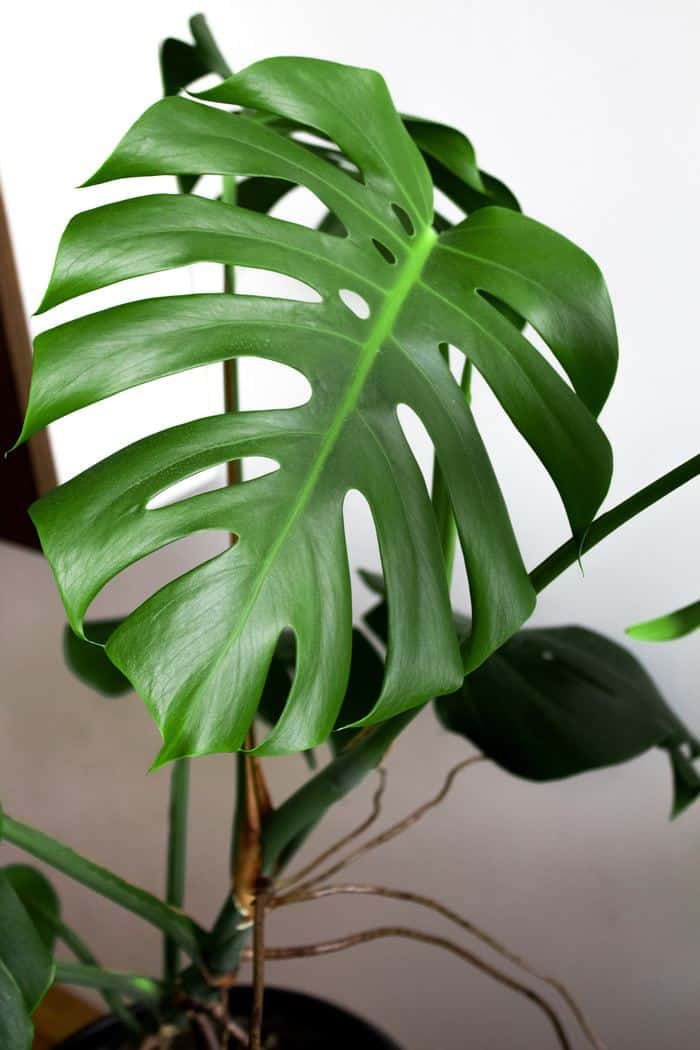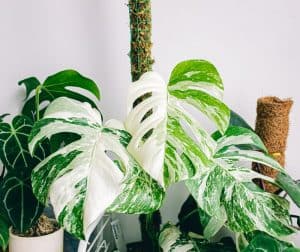These past few years have seen the remarkable rise in popularity of Monstera plants as a top favorite among many homeowners. One of the things that make these plants attractive is their unique ability to give your home a wonderful interior with a jungle touch. But what was meant to be an attraction can instantly turn into a serious problem once your Monstera grows too large for your home.

Unlike other big houseplants with a tree-like pattern that grows upward, Monsteras tend to grow outward instead. Thankfully, these plants are meant to climb, and training them how to grow upwards will also benefit their health overall.
If you are wondering how to train Monstera to climb, the best thing you can do is offer it some kind of support even if these plants can climb naturally on their own. Some of the best structures for support include moss poles, stakes, trellises, and coco coir poles. But if you don’t have any of these, don’t worry because Monstera plants can adapt to any type of support.
What Support Do You Need to Train Monstera to Climb?
When Monstera plants are still young, they often grow vertically. However, as they get heavier and older, the leaves may start to trail, making the plant grow sideways.
Monsteras growing in the wild exhibit epiphytic growth, and this means they attach themselves to surrounding trees and vertical surfaces for them to climb.
Domesticated Monsteras, on the other hand, cannot have the same behavior so if you want to know how to train Monstera to climb, you can choose to use any of the following tools:
Coco Coir Pole
These coco coir poles have a unique natural finish that offers excess moisture. To encourage climbing, don’t forget to mist the poles frequently. You can also stack coco coir poles to house your plant as it grows continuously.

Moss Pole
Moss poles are probably the most common and popular way to support your Monstera and train it to climb. Thanks to the natural texture of moss poles, aerial roots find it easier to latch onto them. The natural finishes of moss poles are also popular among houseplant owners since these can blend in with the Monstera and can offer excess moisture in between regular waterings.
How to Make Moss Pole for Monstera
One of the best ways to help a Monstera plant grow and thrive is to provide it with a moss pole. This can be easily made out of a piece of dowel rod, and some moss that you can find outdoors.
To make the moss pole, you will need:
- A piece of dowel or bamboo, at least 8 feet long
- Moss that you can find outdoors (preferably not grass)
- Chicken wire
- Scissors
- Ruler or measuring tape
- Strings
- Cut the moss into small pieces with scissors. You don’t need a lot, but it should be enough to cover the top and sides of your dowel or bamboo.
- Measure out how much moss you will need to cover the top and sides of your dowel or bamboo.
- Cut the chicken wire to about 2 inches longer than the dowel or bamboo.
- Place some moss on the chicken wire
- Place the dowel or bamboo in the middle of your chicken wire.
- Wrap the wire around the dowel or bamboo
- Use strings to secure the chicken wire
Trellis
Trellises are also effective ways for staking your Monstera. However, be careful that even the lushest and fullest Monsteras can reveal the support stake.
Many trellises can be made either of metal or wood, and you can also find them in various colors to cater to your interior design or personal preferences.
Every time you stake your Monstera, make sure you consider your plant’s expected height. A moss pole might not be the most appropriate long-term solution if you want your Monstera to reach ceiling height.
Bamboo stakes are good alternatives that are easy to find, not to mention cheap. Just remember that slimmer bamboo stakes might not be able to offer enough support for a heavier Monstera’s weight.
You also need to note that if you are using coco coir or moss poles, the plant’s aerial roots will quickly bind to them, but it will take a bit longer if you are using metal or wooden poles.
Why Train Monstera to Climb?
There are two primary reasons why you might want to attach the stems of your Monstera to a moss pole.
The first one is if you like to anchor the bigger and heavier plant stems. To do this, you can use garden ties that should be applied using a suitable tension. It shouldn’t be too tight to the point that it will damage your plant, yet it must still be firmly secured.
The second reason is if you want the aerial roots to be anchored to the moss pole. There are a few ways to guide your Monstera. If the plant roots are already long enough, you can drape or wrap these around the support structure.
You can also use garden ties here to bound the roots to the support. New root growth will then latch on naturally to the support structure.

When to Support Your Monstera
Even though you don’t need to offer support to grow healthy Monsteras, many people still want their plants to grow like a tree instead of a trailing vine.
While it isn’t easy to determine the best time for introducing support poles to your plant, there are a few telltale signs that your Monstera can already use some support:
Aerial Roots Start to Appear
Once aerial roots start showing up, it is a good indication that your Monstera is already old enough and requires support soon. When your Monstera gets older, aerial roots show up from the stems, dangling over the pot’s edge.
Some people don’t really like how aerial roots look so they simply cut them off. However, these aerial roots mean that your Monstera is healthy. The purpose of these roots is to serve as the anchor to help the stem cling to the support system that will encourage the Monstera to climb.
When using a moss pole, these aerial roots absorb moisture from both the pole and air for the plant to stay hydrated in between waterings.
Arching or Bent Stems
As your Monstera matures, this will produce heavier and larger leaves. The absence of support will make the stems start to bend because of the heavy leaves with gravity pulling down the plant.
Your Monstera will continue to grow downwards similar to a vine. Heavier leaves can topple the entire plant or make the stems snap. To prevent it from happening, you need to stake your Monstera and train it to climb.
Horizontal New Growth
Nothing is wrong if your Monstera grows horizontally. But most plant owners prefer training their Monstera to have a vertical growth because it follows a growth similar to trees and takes up less space. You might need to add a stake to your Monstera once your plant starts growing outwards.
Remember these tips and enjoy watching your Monstera as it climbs to all its glory!
Why Is My Monstera Growing Sideways?
Monstera plants are renowned for their glossy, deep green leaves and aerial roots. But what happens when your monstera starts growing sideways instead of straight up?
Monstera growth can be affected by a number of factors, including light, water, and temperature. If your plant is not getting enough light, it may start to grow sideways in order to reach the sun. If the soil is too wet or the plant is too cold, it may also start to grow sideways.
In most cases, there is no need to worry; a little bit of lateral growth is normal for monsteras. However, if your plant is growing significantly more sideways than upright, you may need to adjust its environment to encourage vertical growth.









